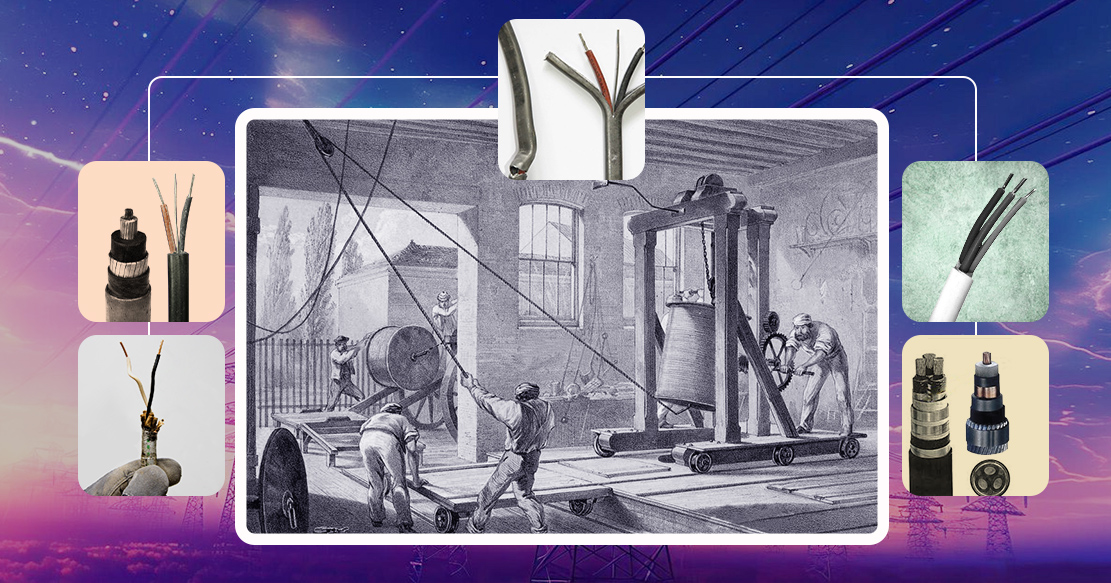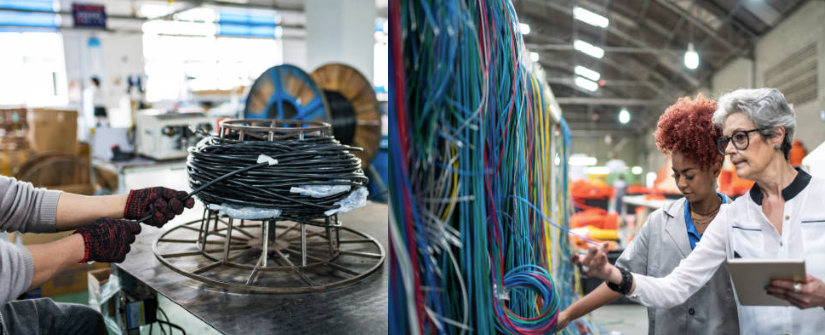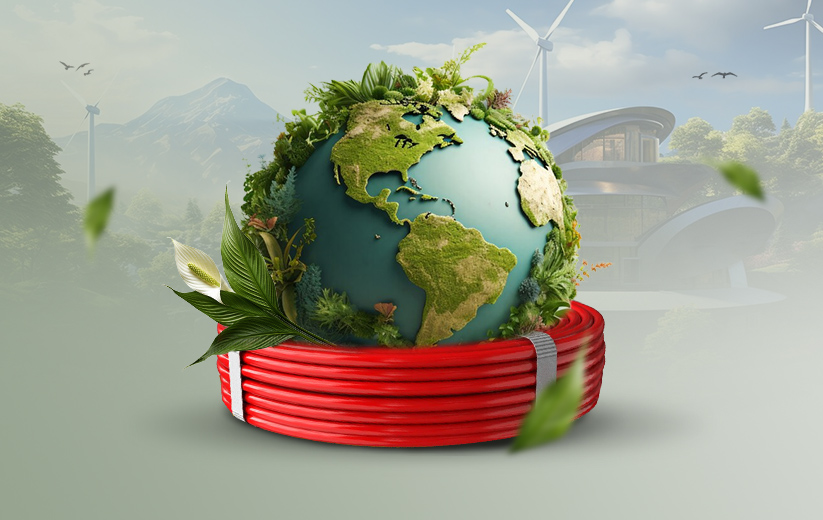
Evolution of Electrical Wires and Cables Over the Years
Today, we can not imagine life without electricity. Be it metropolitan cities, small towns, or even villages, life comes to a standstill if power fails for a significantly long time. Households, schools, offices, hospitals, transportation, and industries – almost all entities are dependent on electricity supply to get going. And electricity transmission would not have been possible to reach us without electrical wires and cables.
With advancements in transmission and the evolution of electrical wires and cables, electricity now reaches places that are hundreds of kilometers away from the source. This journey of electrical cables has been through different levels – starting from the materials to the manufacturing process.
CONTACT USEarly Days of Electrical Transmission
It all started in the year 1833 when Weber and Gauss developed the first electromagnetic telegraph line of 1-kilometer distance. In 1835, the communication line was established in the US using the cable telegraph line. In the year 1844, the rubber-insulated line was established in the form of a Telegraph line between Washington DC to Baltimore, Maryland.
Though the electric motor was invented in 1821 by Michael Faraday, electrical transmission was possible only in the decade of 1880. During this time, the cables were insulated with gutta-percha, a natural plant extract from the sap of trees. However, soon, rubber and vulcanised bitumen wee used for wires and cable insulation.
Thomas Edison started the first electric utility company and the direct current distribution system in New York. During the same time, Nikola Tesla invented the use of alternative current and the polyphase system that made it possible to transmit electricity over long distances.
Domestic Cables Over the Years

Around 1881, cities started to get electricity distribution networks and with an effort to make it available in homes and business places, copper cables became the standard electricity transmission medium. There were refinements in the electricity generation process and in the infrastructure to transmit electricity to the distant corners crossing small towns to even the villages.
By this time, the emphasis was shifted towards the quality of insulation material for the safe domestic usage of electricity. As part of experimental use, impregnated paper insulation was introduced in 1890 that could be used on wires and cables carrying voltage up to 10KV. Further down the years, armoured cables were introduced with flexible sheathing developed from rubber and two-layered cloths in 1906.
Around the 1930s and after, different varieties of synthetic rubber and polyethylene were introduced for sheathing. During this time, PVC insulations were also introduced in Germany.
The year 1950 saw evolutionary changes in domestic wiring, as aluminum was introduced as the conductor alternative to copper. During this time, PVC replaced rubber cables in most of domestic wirings.
Industrialization and High-voltage Electrical Cables
With the Industrial Revolution, electricity was the main propellor replacing coal and other similar natural energy sources. Unlike domestic transmission, industries required medium to high-voltage electricity transmission and the major challenge was the insulation material used on wires to withstand the heat. The invention of XLPE insulation replacing paper-insulated cables made medium-voltage electricity transmission safer than before.
However, for industrial usage, the insulation material for high-voltage electrical transmission was still a challenge. So, the initial change of insulation material from latex/rubber to polyvinyl chloride (PVC) was then replaced with stronger cross-linked polyethylene (XLPE) materials. This significantly enhanced the mechanical and electrical properties of electrical cables by making them withstand high degrees of temperature and moisture.
Around 1980s, the overhead lines got optical fibers along with XLPE cables for high-voltage transmission. This decade also witnessed the introduction of high-temperature-resistant superconductive materials to transmit electricity in the range of 66 KV to 240 KV.
Change in the Manufacturing Process and Standardization

The material selection for wires and cables triggered the initial change in the manufacturing process. Because of its better flexibility and conducive properties, copper was replaced by aluminum which also changed the annealing, extrusion, and wire drawing process. Similarly, as the wires and cables were used for different purposes, for safety and less electrical leakage, the sheathing materials were experimented. From paper, twin cloths, and rubber to PVC, EPR, XLPE – it is quite a journey that has changed the wires and cables manufacturing process big time.
Then comes the standardization of electrical cables. For safety as well as optimum performance of electrical wires and cables, governing bodies (IEC, IEEE, and ANSI) were formed, and thus, all electrical cables needed to comply with certain standards and practices. These standards specify the cable design, materials, conductivity, and performance.
Safety Concerns and the New-age Wires and Cables
Electrical safety has been a concern since its invention. To address this, wires and cables manufacturers as well as government agencies have issued lists of safety tips. However, due to rapid urbanization, complex/unmonitored/unorganized wirings, electrical mishaps keep happening leading to the loss of life and properties.
This led to the inclusion of safety features in the electrical products itself. Fire alarm cables, Fire-resistant cables, Fire survival cables, and Triple-layer FRLSH cables are the reflection of technological advancements and embedded safety features in wires and cables.
Along with fire accidents, the emission of toxic gases, smoke, and halogen flames usually takes more lives. The zero-halogen and low-smoke materials used in the wire sheathing have reduced the damage in case of electrical fire incidents.
The Future – Sustainable and Environment-friendly Cables

The world is changing. There was a time – when long-distance electricity transmission, high conductivity, and electrical safety were the thinking topics. However, technological advancements and years of R&D have resolved most of those. Now, the time has come for sustainable and environmentally friendly electrical cables.
Starting from using eco-friendly raw materials to waste recycling or procedural industrial disposals, the entire wires and cables manufacturing process has become code green. Solar cables to the usage of Thermoplastic Elastomer Polypropylene (HPTE) for reducing a significant amount of carbon dioxide emission in case of fire. As an ISO 9001:2015 certified company, Gloster Cables has been contributing safe as well as environment-friendly electrical products.
CONTACT US